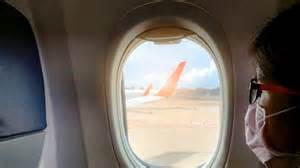7 Essentials for a COVID-19 Travel Kit
An increasing number of states are easing the pandemic restrictions and travel is beginning to re-emerge. On the other hand, travelers looking to get back on the road are re-examining what precautions and protections they need in the current environment. What does a travel kit look like since the pandemic? I’ve consulted with experts and compiled suggestions to reduce the risk of coronavirus exposure. Here you have the essentials for a COVID-19 Travel Kit.
For more information on traveling you can also check our Travel Guides.

These items are a must-have on any trip in today’s coronavirus world:
1 – Masks. You and your traveling party will be wearing one and you all should carry a few spares. Make certain it covers your nose and mouth.
2 – Hand sanitizer. If you have to touch a surface, immediately use a hand sanitizer that is 60 percent alcohol or 70 percent isopropyl alcohol. The Transportation Security Administration eased the 3-ounce limit and is allowing passengers to bring up to 12 ounces of liquid hand sanitizer in carry-on bags.
3 – Disinfectant wipes. You can remove the virus from surfaces by using bleach-based cleaners or hydrogen-peroxide based cleaners. You can make your own travel packs by stacking wipes into resealable plastic bags.
4 – Isopropyl wipes. You might touch your phone as much as you touch your face. The major smartphone manufacturers say you can use isopropanol alcohol wipes to clean your phone. It’s what I’ve done with my phone ever since I have been in EMS without any issues.
5 – Travel laundry detergent. Soak your extra cloth mask(s) in a sink full of water and scrub with laundry detergent. Wring out excess water and hang dry.
6 – Thermometer. COVID-19 symptoms include shortness of breath, fever, coughing and a sore throat. A travel thermometer will help you keep tabs on your temperature.
7 – Digital oximeter. If you are in the risk category for coronavirus, you’ll want a digital pulse oximeter, available at most pharmacies or online stores for less than $30. Usually, when your oxygen levels fall below 94 percent, you will be symptomatic. Any saturation below 94 percent is concerning.
Other Travel Tips and Tricks
Most people know to open doors with an elbow. Keep a social distance of 6 feet from others. Avoid activities with a large number of people, and use touch-less payment methods whenever possible. In the same vein, the following are a few other travel tips and tricks to help make your travel safer.
- Wash and/or sanitize hands after touching any surface.
- Don’t touch your mask/face once it is on.
- Disinfect your credit or debit card after use.
- If driving or flying, plan as few stops as possible. Additionally, TSA recommends placing items from your pockets into your carry-on bag before you go through the security checkpoint so you don’t have to place them in an unsanitized bin.
- Sign up with a medical assistance provider with a global reach that can provide you with local intel, health care resources and telehealth access.
The pandemic has redefined how we travel. Therefore, the better we are at following established protocols, and new ones that may arise as we learn more about how the virus behaves, the better we will be at minimizing exposure to the disease.